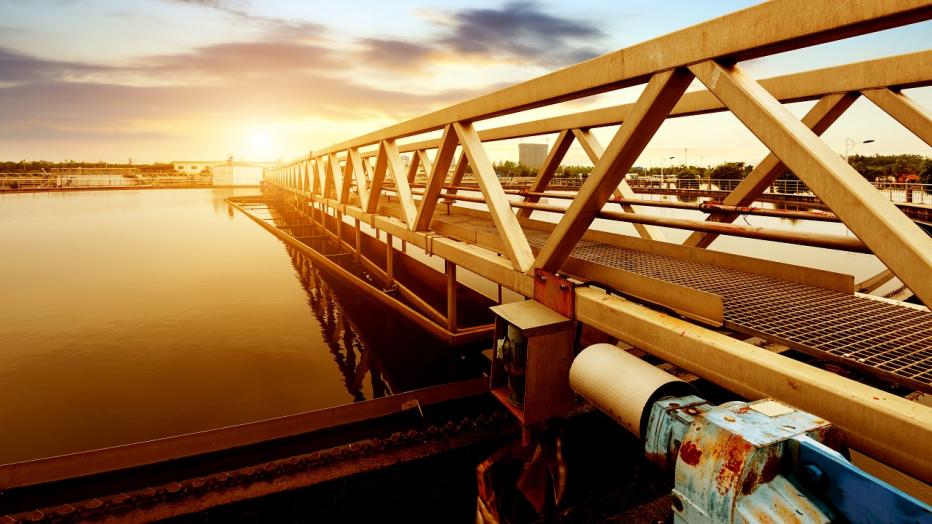
The United States uses more than 58 trillion gallons of water each year to produce energy – enough to fill 88 million Olympic-sized swimming pools! This water is drawn from lakes, rivers and underground aquifers – parts of our freshwater reserves that account for just three percent of the global water supply.
By 2030, the U.S. Intelligence Community estimates that the global middle class will surge to 4.9 billion people, introducing a significant increase in freshwater consumption globally. Satisfying the thirst created by growing populations impacts more than just having enough water to drink and bathe in. When populations boom, there is an increased demand on the energy sector to provide resources needed to power livelihoods. Water and energy are interdependent. Extracting, pumping and delivering water for human use treating wastewater for safe return into to the natural environment requires energy – and water is used in every phase of energy production.
Unless current practices change, we won’t have enough water to drink, let alone serve energy and power needs in the next two decades.
Utilities, industries and water-scarce regions that are implementing water reuse schemes and water systems capable of recovering energy, carbon and nutrients – like Singapore’s Tuas Water Reclamation Plant (WRP) or Denmark’s award-winning Ejby Mølle net-positive energy wastewater treatment plant (WWTP) – recognize the value of conserving and reusing water, optimizing their operations and reducing their energy and carbon footprint.
Solutions such as these are made possible by advanced wastewater technologies like anaerobic digesters for biogas production, generators for electrical energy, fluid-bed incinerators for heat recovery and more. In Singapore for example, the Singapore Public Utilities Board’s new Tuas WRP will be pivotal in helping the island nation serve more than half of its future water needs with NEWater, its own brand of high-grade reclaimed wastewater. Tuas WRP will be the largest membrane bioreactor facility in the world.
A first in Singapore, it will be co-located with a solid waste incineration plant to harness potential synergies of integrating used water and solid waste treatment while optimizing land use. Co-digestion of food waste with used water sludge at Tuas WRP will increase the yield of biogas, which can be used at the incineration plant to improve steam quality and give rise to higher overall plant thermal efficiency. This process will increase electricity production and export more energy to the power grid, while allowing both facilities to be energy self-sufficient.
VCS Denmark’s Ejby Mølle WWTP in Odense achieved energy neutrality primarily using carbon redirection to reduce process energy consumption while increasing energy generation from a biogas-driven combined heat power system. Today, the plant generates over 150 percent of its energy (electrical and heat) demand with sidestream and mainstream deammonification capabilities. This means that surplus electrical energy gets fed back to the power grid and the plant’s hot water is reused in one of VCS’ district heating systems that serves locations nearly 13 miles away – and it’s all done while still achieving full effluent compliance.
This work at the Ejby Mølle WWTP earned a silver award in the Performance Improvement and Operational Solutions category of the 2018 Project Innovation Awards, awarded at the International Water Association World Water Congress & Exhibition held in Tokyo in early September 2018.
As capital and resources get more constrained, thinking differently about how we manage and address the water-energy nexus offers fresh opportunity to reduce and even eliminate shortages in both vital resources – key to achieving a more resilient future.
Energized by cutting-edge technologies and practices maximizing the water-energy nexus? Jacobs’ industry-leading water experts will share related innovations and technical knowledge at the 91st Annual Water Environment Federation Technical Exhibition and Conference (WEFTEC 2018) in New Orleans, Louisiana, Sept. 29 - Oct. 3, 2018:
- Jacobs’ Julian Sandino will share “Thermal Hydrolysis and Incineration of Sludge: Evaluating Their Role in Optimizing Energy Profiles at Advanced BNR Facilities” on Oct.1 during the Evaluating Energy Use and Management Alternatives for Operational Efficiency at WRRFs Session.
- Jacobs’ Tim Constantine will present “Achieving Energy Neutrality: Setting a Vision and Empowering your Staff,” highlighting the Ejby Mølle WWTP, during the In Pursuit of Energy Neutrality: Development and Implementation of Energy Optimization Programs and Strategies at WRRFs Session on Oct. 2. He will be joined by Jacobs’ Emma Shen with insight, “Driving Initiatives — Toronto Water's Twenty-Year Energy Optimization Plan.”
- Robert Forbes and Shantell Richards, both of Jacobs, will participate in the FUNdamentals of Digester Gas-to-Energy Systems Session on Oct. 3, sharing “Exploring the Feasibility of Biogas Utilization from Water Resource Recovery Facilities in Brazil” and “Maximising Value to Customers Through Biogas Use Optimisation and Flexible Energy Generation,” respectively.
Click here to download the 2018 WEFTEC Mobile App for a full list of presentations.
About the author
Peter Nicol currently serves as Global Director of Water at Jacobs and was formerly CH2M’s Global Water Business Group President where he had full profit and loss responsibility for the $1.4 billion global water business, including leading more than 5,000 water professionals, in 175 offices, in more than 50 countries worldwide. Under Peter’s leadership, CH2M solidified its brand as the global market leader in water and wastewater design work, and he continues to lead Jacobs’ industry-leading water efforts. Peter joined CH2M in 1980 after receiving his bachelor of applied science degree in Geological Engineering and Applied Earth Sciences from the University of Toronto.












































